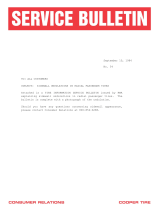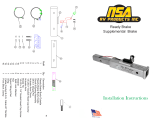
9
Wireless remote control—
1. Indicator light
2. Lock switch
3. Panic switch
4. Unlock switch
The wireless remote control system is
designed to lock or unlock the side
doors and back door, or activate the
panic mode from a distance within
approximately 1 m (3 ft.) of the vehicle.
When you operate any switch, push it
slowly and securely. At this time, the indi-
cator light flashes once.
The wireless remote control key is an
electronic component. Observe the follow-
ing instructions in order not to cause dam-
age to the key.
D Do not leave the key in places where
the temperature becomes high such as
on the dashboard.
D Do not disassemble it.
D Avoid knocking it hard against other
objects or dropping it.
D Avoid putting it in water.
You can use up to 6 wireless remote con-
trol keys for the same vehicle. Contact
your Scion dealer for detailed information.
If the wireless remote control key does
not actuate the doors or operate from a
normal distance, or the indicator light on
the key is dimmed or does not come on:
D Check for closeness to a radio trans-
mitter such as a radio station or an
airport which can interfere with normal
operation of the key.
D The battery may have been consumed.
Check the battery in the key. To re-
place the battery, see “—Replacing bat-
tery” on page 12.
If you lose your wireless remote control
key, contact your Scion dealer as soon as
possible to avoid the possibility of theft,
or an accident. (See “If you lose your
keys” on page 216.)
This device complies with Part 15 of the
FCC Rules. Operation is subject to the
following two conditions: (1) this device
may not cause harmful interference, and
(2) this device must accept any interfer-
ence received, including interference
that may cause undesired operation.
NOTICE:
This equipment has been tested and
found to comply with the limits for a
Class B digital device, pursuant to Part
15 of the FCC Rules. These limits are
designed to provide reasonable protec-
tion against harmful interference in a
residential installation. This equipment
generates, uses and can radiate radio
frequency energy and, if not installed
and used in accordance with the instruc-
tions, may cause harmful interference to
radio communications. However, there is
no guarantee that interference will not
occur in a particular installation. If this
equipment does cause harmful interfer-
ence to radio or television reception,
which can be determined by turning the
equipment off and on, the user is en-
couraged to try to correct the interfer-
ence by one or more of the following
measures:
























